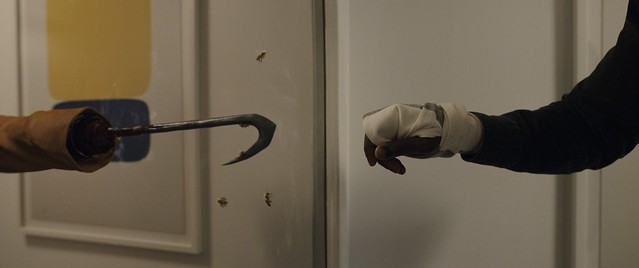 Nia DaCosta's Candyman pays a great deal of tribute to Bernard Rose's 1992 cult classic and builds upon it for the BLM era with much more agency. She and co-writer/producer Jordan Peele acknowledge the progresses the African Americans have made in the US over decades but also remind us that we still live in a white society and it is important not to forget the past.
Nia DaCosta's Candyman pays a great deal of tribute to Bernard Rose's 1992 cult classic and builds upon it for the BLM era with much more agency. She and co-writer/producer Jordan Peele acknowledge the progresses the African Americans have made in the US over decades but also remind us that we still live in a white society and it is important not to forget the past.
The original Candyman was based on a short story by Clive Barker, taking place in East London housing projects. It was brilliantly transposed to Cabrini Green, a real urban housing project in Chicago and based on real-life urban legend mixed with America's racial history. As a horror film, Candyman’s violence and carnage were brutal and gruesome that only Barker could dream of. Some of the film's detractors pointed out that its gothic interracial love story only amplified the stereotypical black male and blond white female trope. But it was the 90s and the class/racial inequalities were addressed only in a skindeep level.
The new Candyman starts with an affluent couple Brianna (Teyonah Parris) and Anthony (Yahya Abdul-Marteen II) in Chicago. They just moved in to a luxury glass skyscraper apartment in downtown. Brianna is an ambitious social climber in the art scene and Anthony, a promising artist. But Anthony is in a rut, unable to get an inspiration for a new piece and the deadline for upcoming group exhibition is approaching. By chance, he hears about Cabrini Green, a projects complex that his luxury building and many others around it have gentrified out of its existence. Then he hears about the legend of Candyman. He is also stung by a bee on his hand while taking pictures in the remnants of Cabrini Green. And the wound is not healing but spreading throughout the half of his body.
Anthony's new art - a bathroom mirror and gruesome paintings inside it with the instructions to summon Candyman, doesn't make a splash at first. But curiosity of white audience in a dare keeps body count rise and so does his viability in the art market.
Writing is sharp and current. One can detect Peele's clever Gen X cultural references throughout. Dacosta and Peele do things right in first introducing Candyman as a creepy man in a yellow jacket with a hook as a hand who gave away candies with razorblades inside them in the 70s, not the original Candyman played by charismatic Tony Todd, suggesting that Candyman is actually Candymen throughout America's ugly racial history, going back before the emancipation. And the film suggests the brutalization and demonization of Black males, from Emmett Till to George Floyd and beyond continues to this day. It was also very telling that the film starts with the logos of the company reversed, like in the mirror. What Anthony is seeing in the mirror is not an affluent and successful African American male today, but a man with his hands cut off with a hook shoved in its place, stung and burned alive centuries ago.
Candyman is a great film and emblemizes the saying that there is no black horror because black history is already a horror.